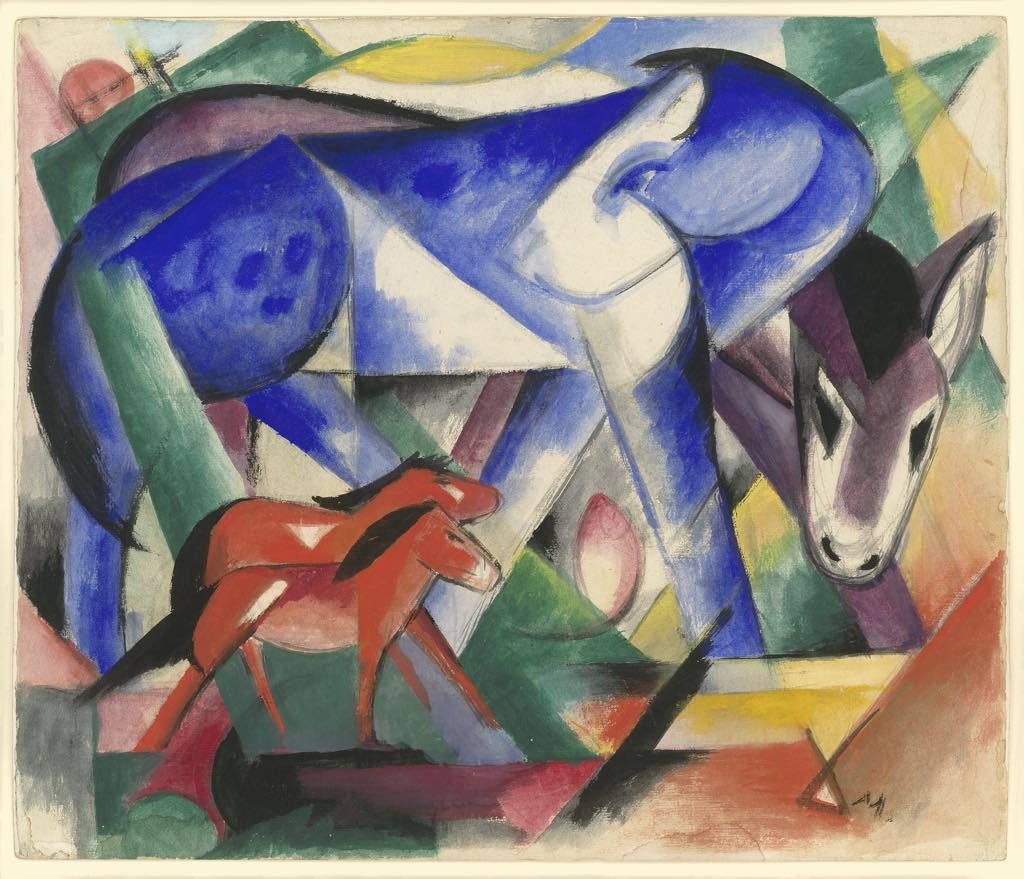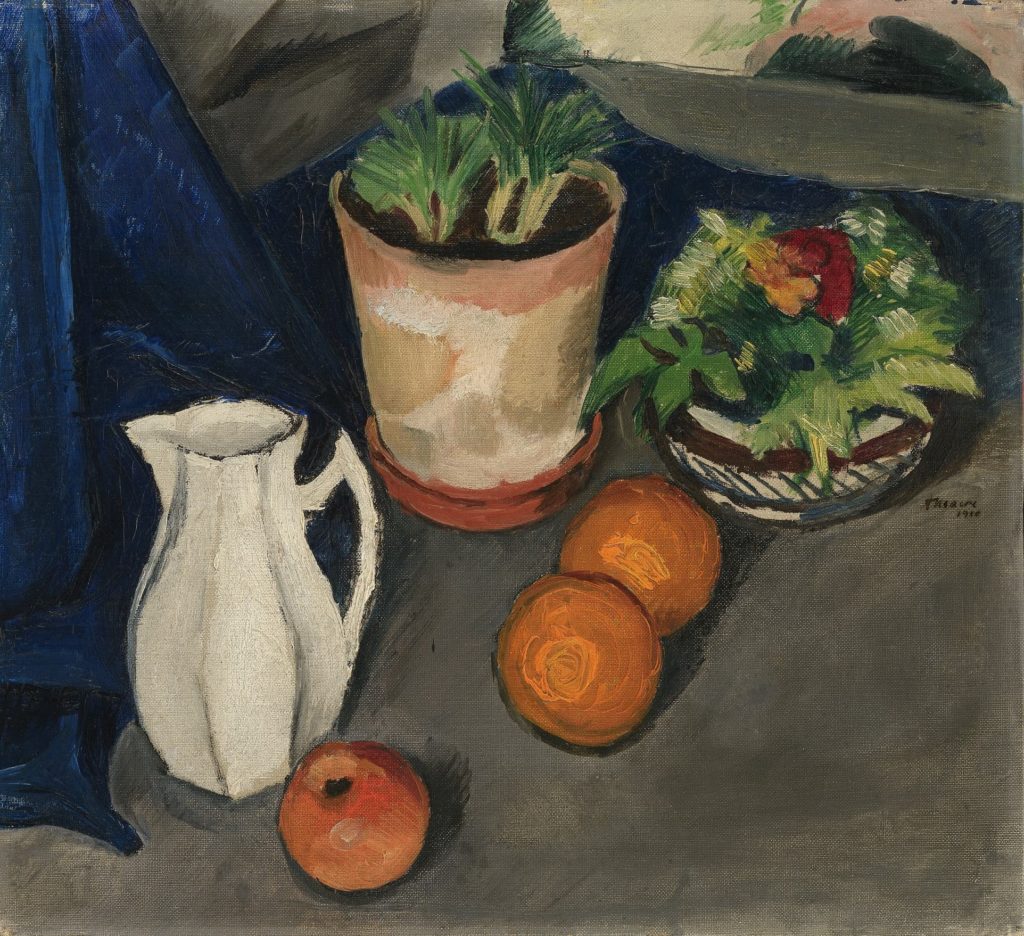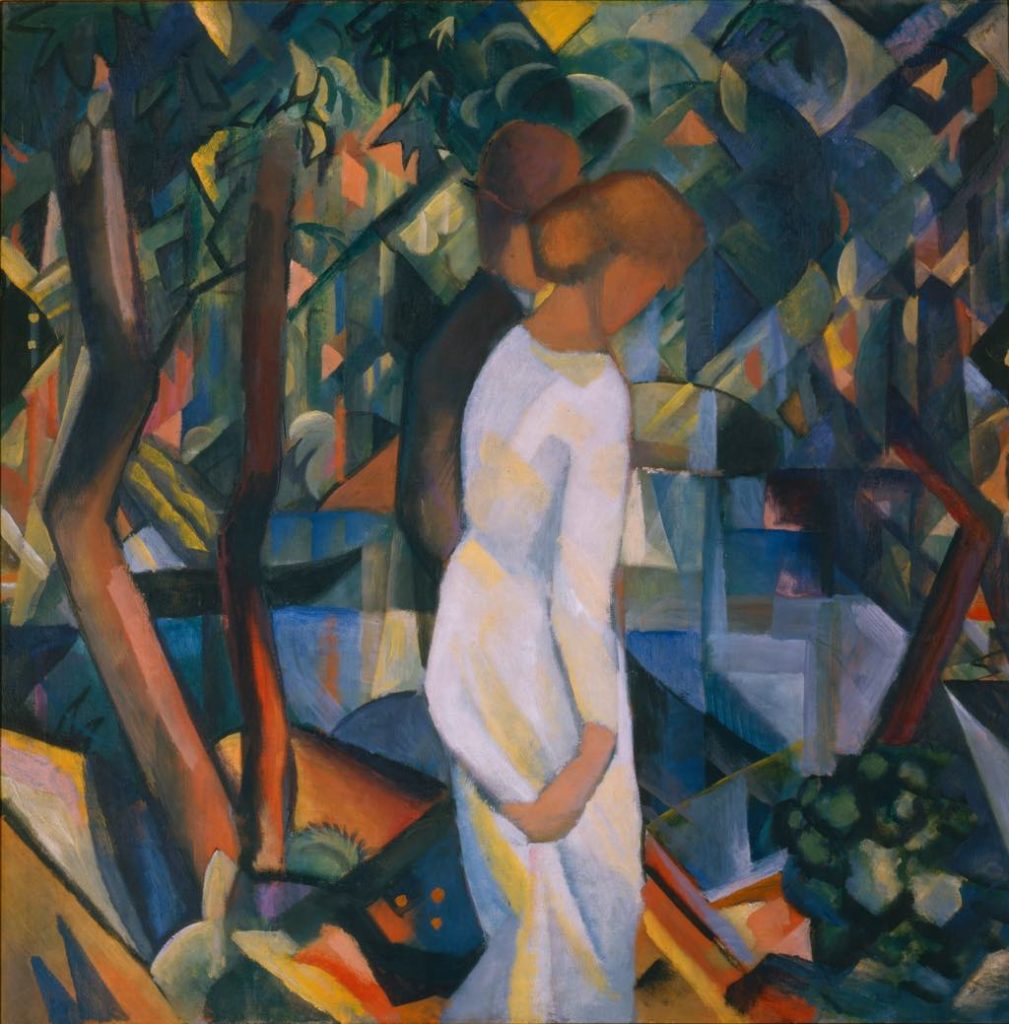The exhibition “Franz Marc/August Macke: The Aventure of the Blue Rider” at the Musée de l’Orangerie tells the tale of the friendship of two talented young artists, which ended in tragedy when both lost their lives while fighting in World War I.
Although there was a seven-year difference in their ages, the two German friends, who met in 1910, found a great deal of artistic common ground and together founded the Expressionist Blaue Reiter (Blue Rider) movement in 1911, along with a handful of friends and colleagues, including Wassily Kandinsky.
The exhibition concentrates more on an overview and comparison of their two careers rather than on the movement, which was imbued with a spiritual element symbolized by the celestial color blue, while the horse rider represented Saint George slaying the dragon, a leftover from old-guard art.
Both painters, well-schooled in the art of their day, were familiar with Japanese and French art and enamored of the work of Van Gogh, Gauguin (Marc) and Cézanne (Macke).
As the wall text points out several times, Marc (1880-1916), who was of a more spiritual bent (he had given up his studies for the priesthood to become an artist), was influenced by German Romanticism and preferred to paint subjects from nature, especially animals, while Macke (1887-1914) “prioritized the use of color, adopting a more rational, formalist and naturalist approach.”
Both were eager to continue the forward march of avant-garde art as part of a confraternity of new European artists who, as Marc wrote in the Blaue Reiter Almanac in 1912, “were signaling to each other – all we need is a look, a handshake to understand each other.”
Alas, the Horsemen of the Apocalypse that Marc sensed “hurtling toward us” arrived all too soon when Germany declared war on France in 1914.
The early works on show here by Marc are not all that impressive, but he already shows a talent and affinity for depicting animals, with skillful drawings of horses and bears.
Macke’s youthful paintings are bolder, more colorful and affecting, among them a tender portrait of his wife carrying a plate of Cézannian apples (a lovely still life by Cézanne is included to demonstrate his influence).
Blaue Reiter exhibitions in Munich in 1911 and ’12 demonstrated that Marc’s vision of united European artists was not an illusion: it included artists from all over the continent and “sketched out the contours of a European blend of Fauvism, Orphism and abstraction.”
As time went on and Marc and Macke came under the influence of Robert Delaunay after a visit to Paris together in 1912, their images began to fracture into kaleidoscopic patterns, with Macke leaning toward Orphism (Orphic Cubism) and Simultanism, and Marc leaning more toward Italian Futurism.
The palates of both remained bright and vibrant as they traveled the road toward abstraction, where “the feeling of life rings completely true,” wrote Marc.
The outbreak of war blocked their artistic progress, however, with Macke dying in 1914, while Marc survived until 1916, sorely missing his friend and companion in arts.
Favorite



